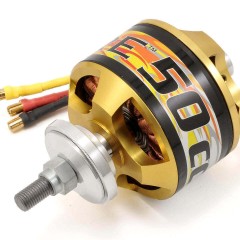Reasons and methods for eliminating vibration of electric motors
Causes
Vibrations of electrical machines can occur at idle, then the source of the defect is of a magnetic nature (incorrect air gap between the stator and rotor, peeling of the varnish of the windings, etc.) or at the time of start-up and under load, then the source of the problem is mechanical.
Mechanical sources of vibration include shaft bending (which can be either a consequence or a cause), rotor alignment, bearing overheating (for example, due to lack of lubrication), and weakening of threaded connections for fastening motor elements. Also, the mode of use of the electric motor (generator or mover) can explain the cause of the malfunction, for example, breakdown of the electric fan blades or violation of the coupling alignment during rotation of the hydraulic units.
Vibration characteristics
When measuring vibration, measure its vertical and horizontal components (or as they also call axial and transverse). There are several concepts of vibrational characteristics, let's see what they are and what are measured:
- Vibration velocity (measured in millimeters per second, mm / s) - a value that characterizes the movement of the measurement point along the axis of the electric motor.
- Vibration acceleration (measured in meters per second squared, m / s2) Is a direct dependence of vibration on the force that caused it. Vibration displacement (measured in micrometers, microns) - the magnitude of the amplitude, showing the distance between the extreme points during vibration.
When measuring vibrational characteristics, as a rule, vibration velocity is measured, since it most accurately describes the nature of the problem. In this case, not the largest value of vibration velocity is measured, but its rms value (RMS). Due to the fact that all the gauges on the principle of action (which were used earlier) are integrating. Permissible norms of vibration of electric motors are given in the Rules for the operation of electric stations and networks (PTE) and in GOST ISO 10816.
Since there are many different electrical machines, GOST R 56646-2015 will help to figure out which standard from the GOST ISO 10816 group is applicable to a particular electric motor. For example, for compressors, motors with a pump, and other applications of the electric drive, there may be different standards and requirements for taking measurements.
These documents contain the basic requirements, norms, recommendations, classes of vibrational state, etc.
Vibration Measuring Instruments
Devices for measuring vibration are divided into several types: vibrometer, vibrograph and vibration analyzer. A vibrometer, the simplest device, determines only one parameter (RMS vibration velocity). A vibrograph, a writing device that records the amplitude of oscillations. These two devices will only help identify excesses.
Only a vibration analyzer can identify the causes (based on measured parameters) of disturbances in vibrational characteristics. There are single-channel and multi-channel vibration analyzers, these devices allow you to download the program of measured parameters from a computer into them, which after measurements will allow you to analyze, calculate and identify the source of vibration. When using a vibration analyzer, vibration sensors are hung on the electric motor. In this way, the cause of the malfunction and the corrective measures can be precisely determined.
Malfunction Detection Algorithm
To determine and eliminate the causes of vibration of the electric motor, there is a simple algorithm. Inspect the running electric motor for the absence of loose bolts, covers, the reliability of mounting the engine to the frame. Next, you need to disconnect the engine and the mechanism it drives. If the vibration is gone, then the reason is in the coupling (violation of the alignment of the coupling halves, different weight of the fingers and so on).
If, after disconnecting the drive mechanism, vibration is idling. So the reason is in the electric motor itself, when the power is turned off (when the motor is coasting), vibration should stop. If it stopped when the power was turned off, then the air gap between the stator and the rotor is to blame. With a damped vibration amplitude when the power is off, the cause is a mechanical rotor defect (bending, crack, rotor barrel defect) or a coupling half defect.
If there is no vibration when the coupling half is removed, it means - in the coupling half, otherwise it is necessary to remove the rotor for dynamic balancing on the machine or for revealing damage to the windings. When diagnosing an electric motor on rolling bearings, their malfunction is easy to detect - increased noise and strong heating.
Defective sliding bearings will manifest themselves under load, if it is not possible to identify the causes of vibration under load, the bearings are most likely to be at fault, they must be replaced or separately diagnosed (for example, vibration sensors should be connected to the place of installation of the bearings).
When detecting increased heating of the bearings, it is also necessary to measure the level of vibrational characteristics, because the bearing itself is rarely the source of the problem, rather, as a result.
It is important to understand that on critical mechanisms (turbine units of hydroelectric power stations, electric motors in nuclear power plants, electric drives of hydroelectric power stations, and so on), the vibration level should be measured regularly, in accordance with the maintenance schedule. Measurements should be carried out by representatives of the manufacturer or specialists of an organization licensed to carry out this type of work. Measurements of vibrational characteristics with temperature measurements of bearings should be reflected in the form of the electric machine.
Now you know why the vibration of the electric motor occurs, as well as how the determination and elimination of the causes occurs. We hope that the provided instruction helped to find and solve the problem!
Related materials:










